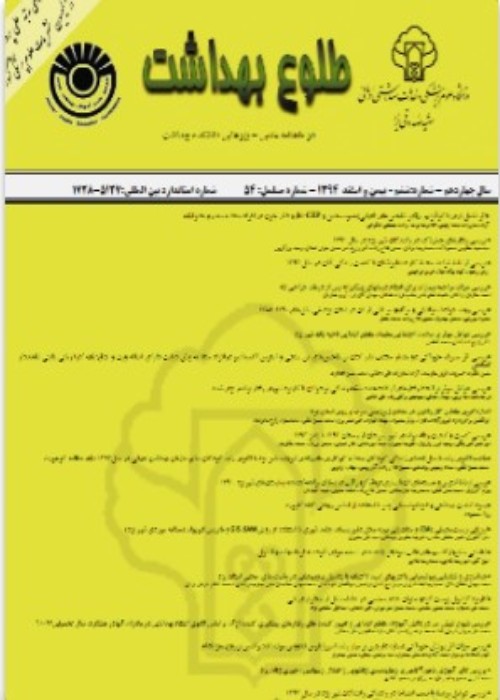Predicting Factors about Drug abuse among Students: an Application of Theory of Planned Behavior
Author(s):
Abstract:
Introduction
Drug abuse and addiction is expanding and is not restricted to a specific social class and age in Iran. Students as a talented and chosen group and are community creators in country. Therefore detection of related factors on the prevention of drug abuse in these people is necessary. One of the most effective and comprehensive explanation of the relationship between attitudes and behavior is Theory of Planned Behavior. This study was conducted by aimed to determine predictors of drug abuse in Yazd University of Medical Sciences students, based on the theory of planned behavior.Methods
This cross-sectional study was performed by simple randomized sampling among 120 students of Yazd University of Medical Sciences. Data collection tool was a researcher made questionnaire in self report, consisted of two parts, 31 demographic and background questions and items relating to the theory of planned behavior consisted, attitude 10 items (α=0.83) score range 10-50, subjective norms 4 items (α=0.75) score range 4-20, perceived behavioral control 2 items (α=0.81) scores range 2-10 and behavioral intention 4 items (α=0.89) score range was 4-20. Data were analyzed by SPSS-18 and with the help of descriptive statistics and analytical tests such as independent T-test, ANOVA, Pearson correlation and linear regression analysis at α=0.05.Results
The average age of participants was 23.49 ±3.27 with range of 18-35 years. 73.3 percent were female and 26.7 percent were male. 8.3 percent had smoking history and 6.7 percent had a history of drug abuse. The attitude score mean respectively were 24.8±6.15, subjective norms 11.10±2.52, perceived behavioral control 6.85±1.86, and behavioral intention 10.95±3.35. Women attitudes (p=0.016) and behavioral intention (p=0.013) in substance use were more positive than men. Married subjective norms (p=0.04) behavioral intention (p=0.042) in substance use were higher than single. Attitudes, subjective norms and behavioral intention had a direct significant relationship and with perceived behavioral control had an inverse significant relationship. Attitudes and subjective norms were predicted respectively 35 and 39 percent of the variance participant's behavioral intentions regarding drug abuse.Conclusion
Attitudes, Persuasive subjective norms, positive behavioral intention toward drug abuse were in middle level and perceived behavioral control in the absence of drug abuse was in the upper-middle level among the students. Considering that attitude and subjective norms were good predictors on behavioral intention, Therefore, the implementation of a training program tailored to the theory, is emphasized.Keywords:
Language:
Persian
Published:
Tolooe Behdasht, Volume:14 Issue: 6, 2016
Pages:
286 to 298
magiran.com/p1530360
دانلود و مطالعه متن این مقاله با یکی از روشهای زیر امکان پذیر است:
اشتراک شخصی
با عضویت و پرداخت آنلاین حق اشتراک یکساله به مبلغ 1,390,000ريال میتوانید 70 عنوان مطلب دانلود کنید!
اشتراک سازمانی
به کتابخانه دانشگاه یا محل کار خود پیشنهاد کنید تا اشتراک سازمانی این پایگاه را برای دسترسی نامحدود همه کاربران به متن مطالب تهیه نمایند!
توجه!
- حق عضویت دریافتی صرف حمایت از نشریات عضو و نگهداری، تکمیل و توسعه مگیران میشود.
- پرداخت حق اشتراک و دانلود مقالات اجازه بازنشر آن در سایر رسانههای چاپی و دیجیتال را به کاربر نمیدهد.
In order to view content subscription is required
Personal subscription
Subscribe magiran.com for 70 € euros via PayPal and download 70 articles during a year.
Organization subscription
Please contact us to subscribe your university or library for unlimited access!


